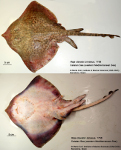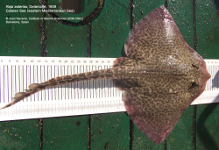Raja clavata
Linnaeus, 1758
Thornback ray
Classification: Elasmobranchii Rajiformes Rajidae
Reference of the original description
Systema Naturae per regna tria naturae, regnum animale, secundum classes, ordines, genera, species, cum characteribus differentiis synonymis, locis. Tomus I. Editio decima, reformata. Stockholm, Laurentii Salvii, 824pp.
Systema Naturae per regna tria naturae, regnum animale, secundum classes, ordines, genera, species, cum characteribus differentiis synonymis, locis. Tomus I. Editio decima, reformata. Stockholm, Laurentii Salvii, 824pp.
Image of the original description
No image in first description.
No image in first description.
Synonyms / new combinations and misspellings
Astrape capensis, Cephaleutherus maculatus, Dasybatis clavata, Malacoraja clavata, Raia aspera, Raia clavata, Raia clavata., Raia rhizacanthus, Raia rubus, Raja aff. clavata, Raja aspera, Raja bonae-speiensis, Raja bonaespeiensis, Raja capensis*, Raja cf. clavata, Raja leiobatos, Raja pontica, Raja rhizacanthus, Raja rubus, Raja (Raja) capensis, Raja (Raja) cf. clavata, Raja (Raja) clavata
Astrape capensis, Cephaleutherus maculatus, Dasybatis clavata, Malacoraja clavata, Raia aspera, Raia clavata, Raia clavata., Raia rhizacanthus, Raia rubus, Raja aff. clavata, Raja aspera, Raja bonae-speiensis, Raja bonaespeiensis, Raja capensis*, Raja cf. clavata, Raja leiobatos, Raja pontica, Raja rhizacanthus, Raja rubus, Raja (Raja) capensis, Raja (Raja) cf. clavata, Raja (Raja) clavata
Types
Raja clavata
Syntype: NRM: 9072;
Astrape capensis
Syntype: MNHN: 1333; RMNH: D2492 RMNH: D2493 RMNH: D2507
Cephaleutherus maculatus
XXXX: No types known;
Raia aspera
Syntype: MNHN: B-0843;
Raia rhizacanthus
Holotype: BMNH: 1905.6.8.13
Raia rubus
Syntype: ZMB: 4591 ZMB: 33075
Raja bonae-speiensis
Syntype: MNHN: 1333 RMNH: D2492 RMNH: D2493 RMNH: D2507
Raja leiobatos
Syntype: BMNH: 1853.11.12.201 (Gronovius coll.)
Raja pontica
XXXX: No types known;
Raja clavata
Syntype: NRM: 9072;
Astrape capensis
Syntype: MNHN: 1333; RMNH: D2492 RMNH: D2493 RMNH: D2507
Cephaleutherus maculatus
XXXX: No types known;
Raia aspera
Syntype: MNHN: B-0843;
Raia rhizacanthus
Holotype: BMNH: 1905.6.8.13
Raia rubus
Syntype: ZMB: 4591 ZMB: 33075
Raja bonae-speiensis
Syntype: MNHN: 1333 RMNH: D2492 RMNH: D2493 RMNH: D2507
Raja leiobatos
Syntype: BMNH: 1853.11.12.201 (Gronovius coll.)
Raja pontica
XXXX: No types known;
Description :
Citation: Raja clavata Linnaeus, 1758: In: Database of modern sharks, rays and chimaeras, www.shark-references.com, World Wide Web electronic publication, Version 01/2026
Please send your images of "Raja clavata" to info@shark-references.com
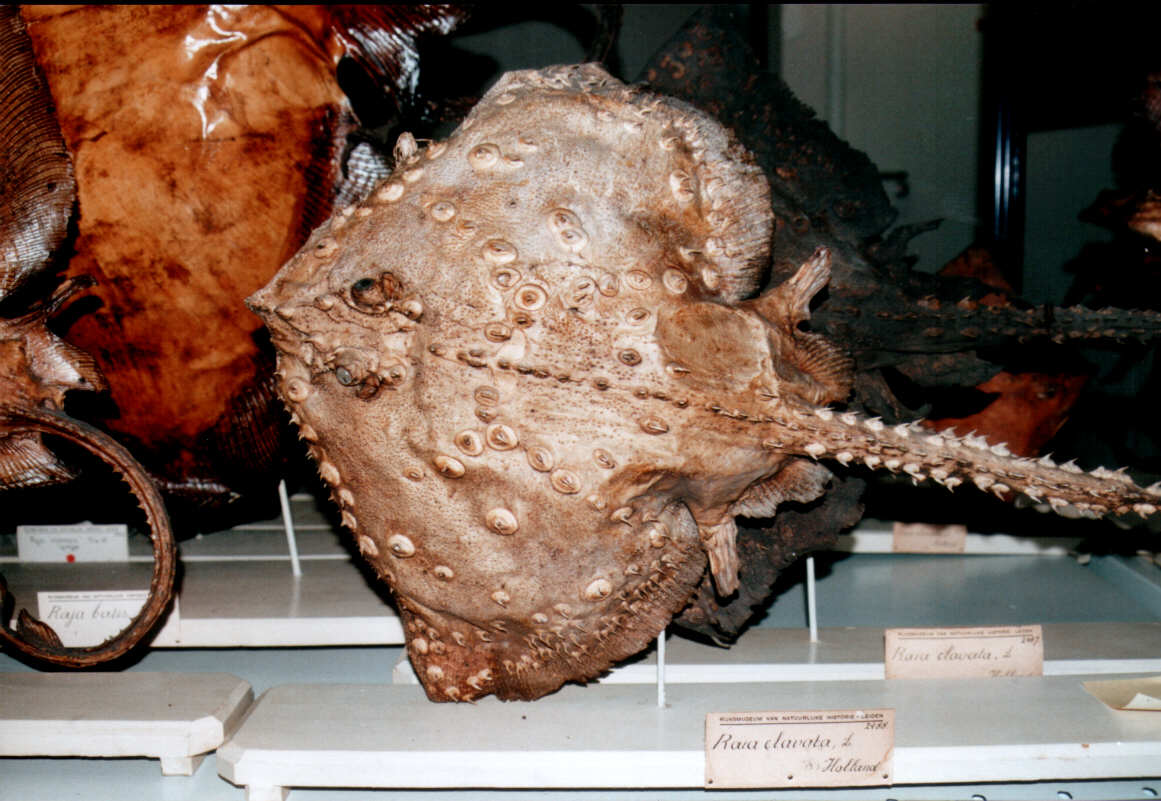
Raja clavata Linnaeus, 1758, Museum Naturalis, Leiden -RMHN- © Dr. Voigt, Konstanz

Raja clavata Linnaeus, 1758, Museum Naturalis, Leiden -RMHN- © Dr. Voigt, Konstanz
Common names
 Dornrochen,
Dornrochen,  Keulen-Stachel,
Keulen-Stachel,  Keulenrochen,
Keulenrochen,  Keulenstachel,
Keulenstachel,  Nagelrochen,
Nagelrochen,  Rochen,
Rochen,  Stachelrochen,
Stachelrochen,  Steinrochen,
Steinrochen,  Arraizabala,
Arraizabala,  Bastina rajada,
Bastina rajada,  Bramante,
Bramante,  Clavel,
Clavel,  Gastaka,
Gastaka,  Pez de mahoma,
Pez de mahoma,  Raia de clavos,
Raia de clavos,  Rajada,
Rajada,  Rajada vera,
Rajada vera,  Raya común,
Raya común,  Raya crabuda,
Raya crabuda,  Raya de clavos,
Raya de clavos,  Raya punjosa,
Raya punjosa,  Romaguera,
Romaguera,  Clavelade,
Clavelade,  Raie bouclée,
Raie bouclée,  Raie bouclée clovée,
Raie bouclée clovée,  Raiton,
Raiton,  Réagris,
Réagris,  Zerra bouké,
Zerra bouké,  Maiden ray,
Maiden ray,  Rocker,
Rocker,  Roker,
Roker,  Skate,
Skate,  Thornback,
Thornback,  Thornback maid ray,
Thornback maid ray,  Thornback ray,
Thornback ray,  Thornback rough ray,
Thornback rough ray,  Thornback skate,
Thornback skate,  Thorny,
Thorny,  Arzilla di scoglio,
Arzilla di scoglio,  Arzilla pietrosa,
Arzilla pietrosa,  Baracola,
Baracola,  Baracoleta,
Baracoleta,  Perdosa,
Perdosa,  Picara pitrusa,
Picara pitrusa,  Picareia,
Picareia,  Pichira pitrusa,
Pichira pitrusa,  Raggia,
Raggia,  Ragia pitrusa,
Ragia pitrusa,  Raia petrosa,
Raia petrosa,  Raja petrusa,
Raja petrusa,  Raja pitrusa,
Raja pitrusa,  Rasa,
Rasa,  Rasa spinosa,
Rasa spinosa,  Rasca petrusa,
Rasca petrusa,  Rascia petroèse,
Rascia petroèse,  Raza,
Raza,  Raza pietrosa,
Raza pietrosa,  Razza,
Razza,  Razza chiodata,
Razza chiodata,  Razza di scoglio,
Razza di scoglio,  Razza spinusa,
Razza spinusa,  Scardano,
Scardano,  Scritta perdosa,
Scritta perdosa,  Arraia,
Arraia,  Lenga,
Lenga,  Raia,
Raia,  Raia lenga,
Raia lenga,  Raia-brocheada,
Raia-brocheada,  Raia-lenga,
Raia-lenga,  Raia-pinta
Raia-pinta
 Dornrochen,
Dornrochen,  Keulen-Stachel,
Keulen-Stachel,  Keulenrochen,
Keulenrochen,  Keulenstachel,
Keulenstachel,  Nagelrochen,
Nagelrochen,  Rochen,
Rochen,  Stachelrochen,
Stachelrochen,  Steinrochen,
Steinrochen,  Arraizabala,
Arraizabala,  Bastina rajada,
Bastina rajada,  Bramante,
Bramante,  Clavel,
Clavel,  Gastaka,
Gastaka,  Pez de mahoma,
Pez de mahoma,  Raia de clavos,
Raia de clavos,  Rajada,
Rajada,  Rajada vera,
Rajada vera,  Raya común,
Raya común,  Raya crabuda,
Raya crabuda,  Raya de clavos,
Raya de clavos,  Raya punjosa,
Raya punjosa,  Romaguera,
Romaguera,  Clavelade,
Clavelade,  Raie bouclée,
Raie bouclée,  Raie bouclée clovée,
Raie bouclée clovée,  Raiton,
Raiton,  Réagris,
Réagris,  Zerra bouké,
Zerra bouké,  Maiden ray,
Maiden ray,  Rocker,
Rocker,  Roker,
Roker,  Skate,
Skate,  Thornback,
Thornback,  Thornback maid ray,
Thornback maid ray,  Thornback ray,
Thornback ray,  Thornback rough ray,
Thornback rough ray,  Thornback skate,
Thornback skate,  Thorny,
Thorny,  Arzilla di scoglio,
Arzilla di scoglio,  Arzilla pietrosa,
Arzilla pietrosa,  Baracola,
Baracola,  Baracoleta,
Baracoleta,  Perdosa,
Perdosa,  Picara pitrusa,
Picara pitrusa,  Picareia,
Picareia,  Pichira pitrusa,
Pichira pitrusa,  Raggia,
Raggia,  Ragia pitrusa,
Ragia pitrusa,  Raia petrosa,
Raia petrosa,  Raja petrusa,
Raja petrusa,  Raja pitrusa,
Raja pitrusa,  Rasa,
Rasa,  Rasa spinosa,
Rasa spinosa,  Rasca petrusa,
Rasca petrusa,  Rascia petroèse,
Rascia petroèse,  Raza,
Raza,  Raza pietrosa,
Raza pietrosa,  Razza,
Razza,  Razza chiodata,
Razza chiodata,  Razza di scoglio,
Razza di scoglio,  Razza spinusa,
Razza spinusa,  Scardano,
Scardano,  Scritta perdosa,
Scritta perdosa,  Arraia,
Arraia,  Lenga,
Lenga,  Raia,
Raia,  Raia lenga,
Raia lenga,  Raia-brocheada,
Raia-brocheada,  Raia-lenga,
Raia-lenga,  Raia-pinta
Raia-pinta
Short Description
Upper surfaces wholly prickly, underside wholly prickly in large females, only snout and margins of disc in young and large males; orbital thorns separate, 30-50 in median row from nape to first dorsal fin; additional large "quot;buckler"quot; thorns with swollen bases scattered on upper surface of disc in adults [7182]. Sub rhomboid disc, disc-width 1,25 to 1,36 times in its length, its length 1,70 to 1,83 times in total length; short rostrum, rounded at his extremity; pectoral fins with clear angles on lateral side; triangular pelvic fins (Ref. 39246). Upper surface very variable, all shades of brown, variegated with dark and light spots and blotches, underside white [7182].
Upper surfaces wholly prickly, underside wholly prickly in large females, only snout and margins of disc in young and large males; orbital thorns separate, 30-50 in median row from nape to first dorsal fin; additional large "quot;buckler"quot; thorns with swollen bases scattered on upper surface of disc in adults [7182]. Sub rhomboid disc, disc-width 1,25 to 1,36 times in its length, its length 1,70 to 1,83 times in total length; short rostrum, rounded at his extremity; pectoral fins with clear angles on lateral side; triangular pelvic fins (Ref. 39246). Upper surface very variable, all shades of brown, variegated with dark and light spots and blotches, underside white [7182].
Distribution
Eastern Atlantic: Iceland, Norway, North Sea and the western Baltic southward to Morocco and Namibia, including the Mediterranean and the Black Sea. Although reported from southern Africa, its status in the area is uncertain [536]. Source: www.gbif.org
Eastern Atlantic: Iceland, Norway, North Sea and the western Baltic southward to Morocco and Namibia, including the Mediterranean and the Black Sea. Although reported from southern Africa, its status in the area is uncertain [536]. Source: www.gbif.org
Human uses
fisheries: commercial; gamefish: yes; aquarium: public aquariums
fisheries: commercial; gamefish: yes; aquarium: public aquariums
Biology
Oviparous, paired eggs are laid. Embryos feed solely on yolk [733]. About 150 egg-cases are laid in a year, in spring (northwestern Europe) or winter and spring (Mediterranean) [7182]. Distinct pairing with embrace. Young may tend to follow large objects, such as their mother [17086]. Inhabit shelf and upper slope waters from the coastal line to about 300 m. Depth range from 20-300 m [7180], and from 300-577 m in the eastern Ionian Sea [17735]. Found on sand and sand-rock bottoms [17687]. Feed on all kinds of bottom animals, preferably crustaceans [7182]. Diet and feeding strategy from the eastern-central Adriatic Sea (data from 428 specimens, 140 mm -751 mm TL): stomachs contents belong to eight major groups: Cephalopoda, Polychaeta, Stomatopoda, Decapoda (Natantia and Reptantia), Mysidacea, Isopoda, Amphipoda and Teleostei. Decapods were the most important prey (index of relative important, %IRI,= 72•8) followed by teleosts (%IRI = 20•4). Small-sized individuals (<25 cm LT) fed primarily on small crustaceans (mysids and amphipods), whereas large-sized specimens consumed larger prey, such as decapods, cephalopods and teleosts [16596].
Oviparous, paired eggs are laid. Embryos feed solely on yolk [733]. About 150 egg-cases are laid in a year, in spring (northwestern Europe) or winter and spring (Mediterranean) [7182]. Distinct pairing with embrace. Young may tend to follow large objects, such as their mother [17086]. Inhabit shelf and upper slope waters from the coastal line to about 300 m. Depth range from 20-300 m [7180], and from 300-577 m in the eastern Ionian Sea [17735]. Found on sand and sand-rock bottoms [17687]. Feed on all kinds of bottom animals, preferably crustaceans [7182]. Diet and feeding strategy from the eastern-central Adriatic Sea (data from 428 specimens, 140 mm -751 mm TL): stomachs contents belong to eight major groups: Cephalopoda, Polychaeta, Stomatopoda, Decapoda (Natantia and Reptantia), Mysidacea, Isopoda, Amphipoda and Teleostei. Decapods were the most important prey (index of relative important, %IRI,= 72•8) followed by teleosts (%IRI = 20•4). Small-sized individuals (<25 cm LT) fed primarily on small crustaceans (mysids and amphipods), whereas large-sized specimens consumed larger prey, such as decapods, cephalopods and teleosts [16596].
Size / Weight / Age
105 cm TL (male/unsexed; (Ref. 6014)); 120 cm TL (female); max. published weight: 18.0 kg [20241]; max. reported age: 12 years (Ref. 72473)
105 cm TL (male/unsexed; (Ref. 6014)); 120 cm TL (female); max. published weight: 18.0 kg [20241]; max. reported age: 12 years (Ref. 72473)
Remarks
shark-references Species-ID=5577;
shark-references Species-ID=5577;
Parasites (arranged by Jürgen Pollerspöck)
Ciliophora
Conoidasida
Myxosporea
Monogenea
Cestoda
Trematoda
Nematoda
Copepoda
Isopoda
Hirudinea
- Scopelocheirus hopei (Costa in Hope, 1851) [31787]
Ciliophora
- Trichodina gobii Raabe, 1959 [22626]
Conoidasida
- Eimeria ottojiroveci Dyková & Lom, 1983 [32027]
Myxosporea
- Ceratomyxa agilis Thélohan, 1892 [22626]
- Chloromyxum leydigi Mingazzini, 1890 [22626]
- Chloromyxum partistriatus Kovaljova, Donetz & Kolesnikova, 1989 [22626] [28406]
- Chloromyxum psetti Kovaljova, Donetz & Kolesnikova, 1989 [22626]
Monogenea
- Acanthocotyle elegans Monticelli, 1890 [17150] [15273]
- Acanthocotyle greeni Macdonald & Llewellyn, 1980 [15273]
- Acanthocotyle lobianchi Monticelli, 1888 [17150] [15270] [15282] [15273] [15267]
- Acanthocotyle monticellii Scott, 1902 [17150]
- Acanthocotyle oligoterus (Monticelli, 1899) [17150]
- Acanthocotyle sp. [19885] [15246]
- Calicotyle kroyeri Diesing, 1850 [17150] [23994] [15273] [15268] [7377] [22626] [31118] [34724] [34006]
- Dictyocotyle coeliaca Nybelin, 1941 [23943]
- Empruthotrema raiae (Maccallum, 1916) Johnston & Tiegs, 1922 [15273] [17002] [31118]
- Gyrodactylus alviga Gaevskaya & Dmitrieva, 1967 [22626]
- Gyrodactylus flesi Malmberg, 1957 [34724]
- Gyrodactylus pterygialis Bychowsky & Polyansky, 1953 [34724]
- Hexabothrium appendiculatum (Kuhn, 1829) [19885]
- Leptocotyle minor (Monticelli, 1888) [9347]
- Rajonchocotyle batis Cerfontaine, 1899 [17150]
- Rajonchocotyle emarginata (Olsson, 1876) [22616] [17150] [17150] [15273] [15243] [17450] [9347] [22565] [34006]
- Rajonchocotyle sp. [31118]
Cestoda
- Acanthobothrium benedeni (Lönnberg, 1889) [16247] [16175] [16448] [28741]
- Acanthobothrium coronatum (Rudolphi, 1819) Van Beneden, 1850 [16346] [16448]
- Acanthobothrium crassicolle Wedl, 1855 [16175]
- Acanthobothrium dujardinii Van Beneden, 1849 [16346] [16247] [16175] [16448] [16448] [28741]
- Acanthobothrium filicolle (Zschokke, 1887) [16448]
- Acanthobothrium paulum Linton, 1890 [16448]
- Acanthobothrium ponticum Borcea, 1934 [16346] [16448] [28741]
- Acanthobothrium septentrionale Baer & Euzet, 1962 [16175]
- Acanthobothrium sp. [16448]
- Echeneibothrium sp. [33185]
- Echeneibothrium tumidulum (Rudolphi, 1819) [19885]
- Echeneibothrium variabile Van Beneden, 1850 [16346]
- Echinobothrium affine Diesing, 1863 [16430] [16430]
- Echinobothrium brachysoma Pintner, 1889 [16430] [19536]
- Echinobothrium clavatum Probert & Stobart, 1989 [16378] [16430] [19536]
- Echinobothrium harfordi Mcvicar, 1976 [16358] [16430] [19536]
- Echinobothrium typus Van Beneden, 1849 [16346] [16430] [19536] [22981]
- Gilquinia squali (Fabricius, 1794) [16112]
- Grillotia (Christianella) minuta (Van Beneden, 1849) [16112]
- Grillotia (Grillotia) erinaceus (Van Beneden, 1858) [16303]
- Grillotia erinaceus (Van Beneden, 1858) [19885] [16112] [7411]
- Hepatoxylon megacephalum (Rudolphi, 1819) [16112]
- Nybelinia lingualis (Cuvier, 1817) [16112]
- Onchobothrium pseudouncinatum De Beauchamp, 1905 [17089] [16101]
- Phyllobothrium lactuca Van Beneden, 1850 [16443]
- Phyllobothrium sp. [16443]
- Phyllobothrium thridax (Van Beneden, 1849) [16443]
- Tetrarhynchobothrium tenuicolle Diesing, 1854 [16112] [7412]
- Tritaphros retzii Lönnberg, 1889 [33185]
Trematoda
- Otodistomum veliporum (Creplin, 1837) Stafford, 1904 [22616]
- Stichocotyle nephropis Cunningham, 1887 [25979]
Nematoda
- Anisakis simplex (Rudolphi, 1809) [33185]
- Ascaris succisa Rudolphi, 1819 [17029]
- Hysterothylacium aduncum (Rudolphi, 1802) [22626]
- Metanisakis baylisi (Gibson, 1973) [17029]
- Proleptus acutus Dujardin, 1845 [31368]
- Proleptus obtusus Dujardin, 1845 [9347]
- Proleptus robustus (Van Beneden, 1871) [19885] [22626]
- Proleptus sp. [33185]
- Pseudanisakis tricupola Gibson, 1973 [22626]
Copepoda
- Caligus elongatus Von Nordmann, 1832 [16598] [9347]
- Caligus sp. [27471]
- Charopinus dalmanni (Retzius, 1829) [16609] [22626]
- Charopinus dubius Scott, 1900 [16609]
- Lepeophtheirus europaensis Zeddam, Berrebi, Renaud, Raibaut & Gabrion, 1988 [22626]
- Lepeophtheirus pectoralis (Müller, 1776) [16598] [22626]
- Lernaeopoda galei Krøyer, 1837 [27471]
- Schistobrachia ramosa (Krøyer, 1863) [16598] [22626]
- Trebius caudatus Krøyer, 1838 [23942] [16609]
Isopoda
- Aega rosacea (Risso, 1816) (nomen nudum) [23898]
- Anilocra physodes (Linnaeus, 1758) [23898]
- Ceratothoa oestroides (Risso, 1826) [31460]
- Ceratothoa parallela (Otto, 1828) [31460]
- Livoneca sinuata Koelbel, 1878 [21431]
- Natatolana neglecta (Hansen, 1890) [29380] [31787]
- Nerocila orbignyi (Guérin-Méneville, 1832) [31460]
Hirudinea
- Branchellion torpedinis Savigny, 1822 [25687] [17101]
- Pontobdella moorei Oka, 1910 [21638]
- Pontobdella muricata (Linnaeus, 1758) [21463] [22626] [20503] [24406]








.jpg)
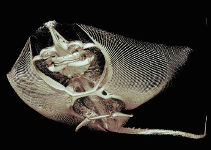
.jpg)
.jpg)
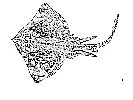
.jpg)
.jpg)
.jpg)
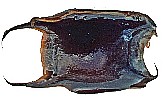
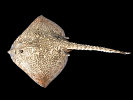
.jpg)
